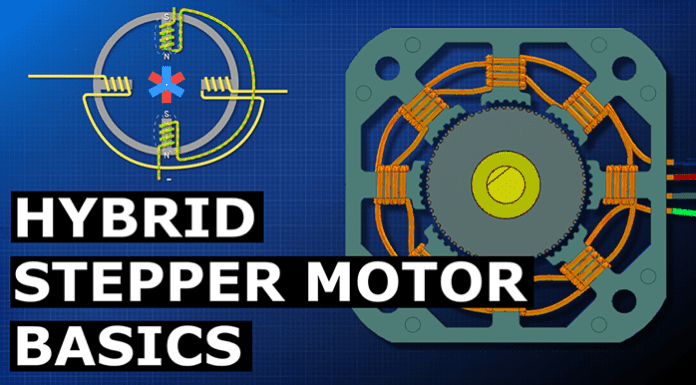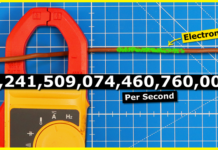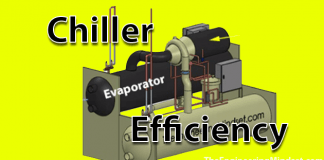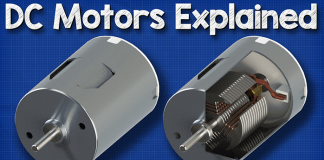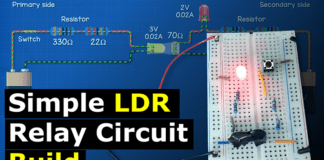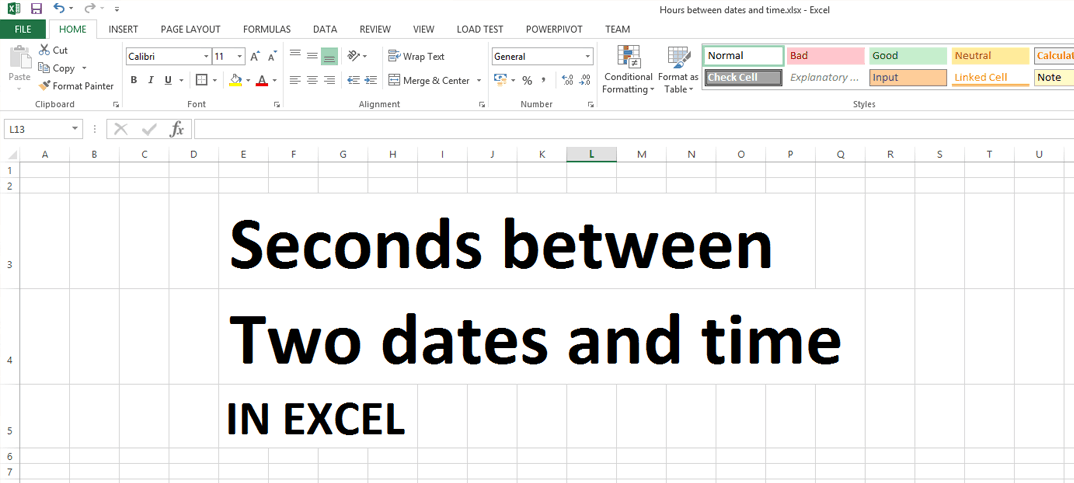Learn how hybrid stepper motor works in this video on hybrid stepper motor basics, covering the rotational magnetic field as well as the rotor and stator.
Scroll to the bottom to watch the YouTube tutorial
The hybrid stepper motor is the most common version used. It is a hybrid because it is a combination of the variable reluctance and the permanent magnet stepper motor. If we look at this simplified version with four coils connected in two pairs, we have the actually magnetised rotor, meaning the poles are at opposite ends. The rotor has three teeth on each magnetic pole. There are a different number of teeth and coils to prevent them from all aligning at the same time.
When we energise the coils, they form north and south poles. These interact with the rotor’s permanent magnetic field. The rotor’s south pole tooth is repelled by the stator’s south pole and is also attracted to the stator’s north pole. Meanwhile, the rotor’s north pole tooth is repelled by the stator’s north pole and is attracted to the stator’s south pole. This causes rotation.
Then the next set of coils are energised. The rotor’s magnetic field are again attracted and repelled by the stator’s coils, causing rotation. This continues with the different sets of coils being energised and the current reversing to change polarity of the coil. In this example, each step is 30 degrees. So now when we look at a more complex hybrid stepper motor, we can see the same thing happening, but with greater precision.
There are eight coils split into two groups of four. The rotor has 50 teeth and the stator has 48 teeth. When the coils are energised, they create magnetic fields which interact with the rotor’s permanent magnet. Looking closer, we can see that each time the coil polarity changes, it causes the rotor to turn one step, which in this case is 1.8 degrees. Notice that each time it turns only the teeth nearest the north polarity stator coils align. All other rotor teeth do not. Remember, the rotor contains a permanent magnet, which is actually magnetised, meaning the poles are at opposite ends.
So while the rotor’s south pole teeth align with the stator’s north polarity coils, the rotor’s north pole teeth align with the stator’s south polarity coils. This design gives us very high precision and talk.

